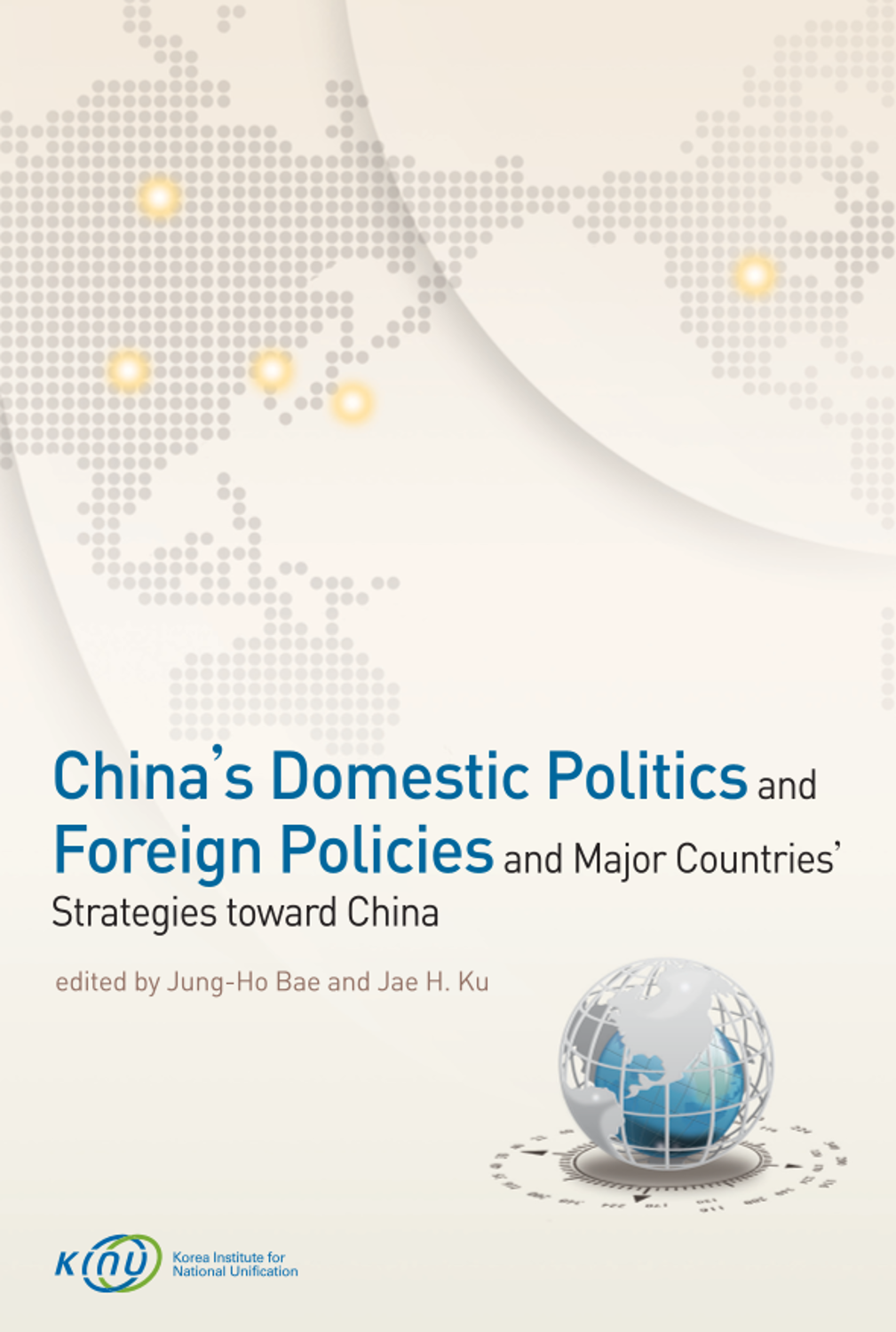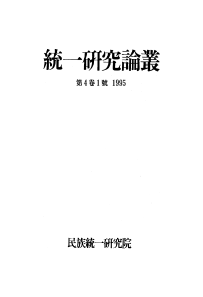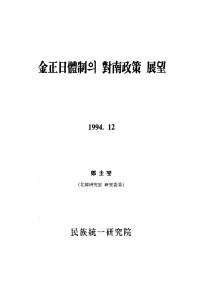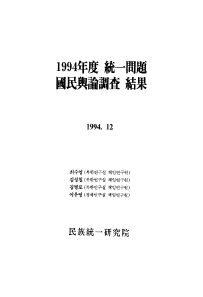
연구원발간물
China's Domestic Politics and Foreign Policies and Major Countries' Strategies toward China
- 발행사항
- Seoul : Korea Institute for National Unification, 2012
- 형태사항
- 536 p. ; 24 cm
- ISBN
- 9788984796867
- 청구기호
- 000 기타12-06
소장정보
| 위치 | 등록번호 | 청구기호 / 출력 | 상태 | 반납예정일 |
|---|---|---|---|---|
이용 가능 (2) | ||||
| 1자료실 | G0014457 | 대출가능 | - | |
| 1자료실 | G0014458 | 대출가능 | - | |
이용 가능 (2)
- 등록번호
- G0014457
- 상태/반납예정일
- 대출가능
- -
- 위치/청구기호(출력)
- 1자료실
- 등록번호
- G0014458
- 상태/반납예정일
- 대출가능
- -
- 위치/청구기호(출력)
- 1자료실
책 소개
Since China emerged as the second economically strongest power in the world, the international community has paid increasingly more attention to it. China’s rise as a G2 power as part of a transition of global power and the potential future of the Chinese economy have been of particular interest. The changing nature of U.S.-China relations and the strategic environment of East Asia during this transition of global power has become a topic of high interest for Korea as well.
This is a crucial time to accurately analyze and evaluate the present and future of China. There is no value in underestimating or overestimating China’s prospects. Since South Korea must cooperate strategically and wisely with China to deal with a changing North Korea while at the same time preparing for unification of the Korean Peninsula, accurate analysis and understanding of the reality of China’s power―Chinese leadership and political economy, and its foreign policy and strategy towards North Korea ―is necessary.
Given these strategic issues, this study intends to discuss and analyze China’s political economy and leadership, foreign policy and relations, and major countries’ (the U.S., Japan, Russia, India, and Australia) policies toward China as part of a joint research project with experts abroad.
This study is deeply indebted to a few individuals for their precious advice and cooperation in assembling this volume: Dr. Jae H. Ku at the U.S.-Korea Institute at SAIS, Johns Hopkins University, and Dr. Yong Shik Choo at the Graduate School of International Studies, Chung-Ang University. Also a special thanks to Mimi Ahn, who devoted several months of her time throughout the entire process of publication.
As the editor of this volume, it is my hope that this research helps academics and experts as well as general audiences to better understand the implications of China’s rise to its region and the world.
목차
Preface/ Jung-Ho Bae (Director of the Center for Unification Policy Studies at Korea Institute for National Unification)
Introduction
Turning Points for China and the Korean Peninsula/ Jung-Ho Bae and Dongsoo Kim (Korea Institute for National Unification)
Part 1 : Evaluation of China’s Domestic Politics and Leadership
Chapter 1
A Chinese Model for National Development/ Yong Shik Choo (Chung-Ang University)
Chapter 2
Leadership Transition in China- from Strongman Politics to Incremental Institutionalization/ Yi Edward Yang (James Madison University)
Chapter 3
Actors and Factors- China’s Challenges in the Crucial Next Five Years/ Christopher M. Clarke (U.S. State Department’s Bureau of Intelligence and Research-INR)
Chapter 4
China’s Ethnic Minorities and Reform/ Carla P. Freeman (SAIS, Johns Hopkins University)
Part 2: China’s Foreign Relations and its Policies toward Major Countries
Chapter 5
Resisting, Reducing, and Replacing- China’s Strategy and Policy towards the United States/ Fei-Ling Wang (Georgia Institute of Technology & Minerva Fellow, United States Air Force Academy)
Chapter 6
China’s Japan Policy- Managing the Islands Dispute in a Transitional Era/ Yongtao Gui (Peking University)
Chapter 7
China’s Dilemma and its Policies toward North Korea in the Kim Jong-un Era- Maintaining the Status Quo while Managing a Difficult North Korea/ Ki-Hyun Lee (Korea Institute for National Unification)
Chapter 8
The Uneasiness of Big Brother-Little Brother Relationships- China’s Relations with Neighboring Vietnam, Laos, Cambodia, Mongolia, and Myanmar/ Jae H. Ku and Wonhee Lee (SAIS, John Hopkins University)
Chapter 9
The North Korean Nuclear Issue and China’s Strategy/ Seongwhun Cheon (Korea Institute for National Unification)
Chapter 10
One Strategy, Three Pillars- China’s Attempt to Secure Global Energy Resources/ Bo Kong (SAIS, Johns Hopkins University)
Part 3: Major Countries’ Policies and Strategies toward China
Chapter 11
U.S. Policy and Strategy toward China/ Michael S. Chase (U.S. Naval War College)
Chapter 12
Understanding Japan’s Strategy toward China/ Yasuhiro Matsuda (University of Tokyo)
Chapter 13
Russia’s Policy toward China/ Viacheslav Amirov (IMEMO- Russia)
Chapter 14
Australia’s Strategy toward China/ Linda Jakobson (Lowy Institute for International Policy)
Chapter 15
Taiwan’s Strategy on New Directions of Cross-strait Relations/ Fu-Kuo Liu (National Chengchi University)
Chapter 16
India’s Strategy toward China/ Surjit Mansingh (American University)
Chapter 17
China’s Rise and the Korean Peninsula- A Convergence of Interests for South Korea and Australia?/ Andrew O’Neil (Griffith University)
Contributors





